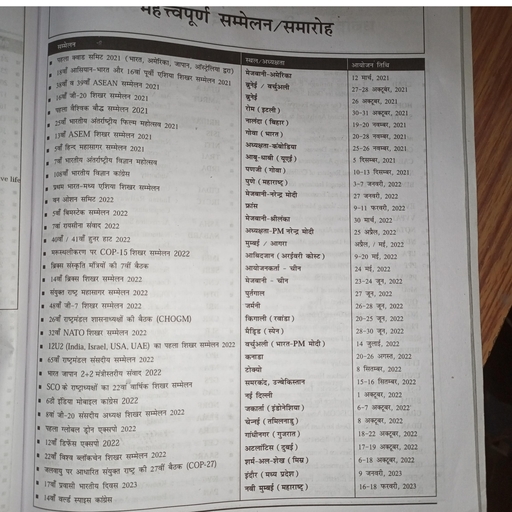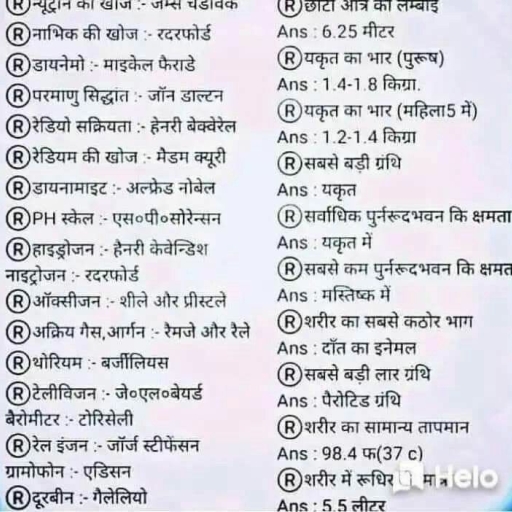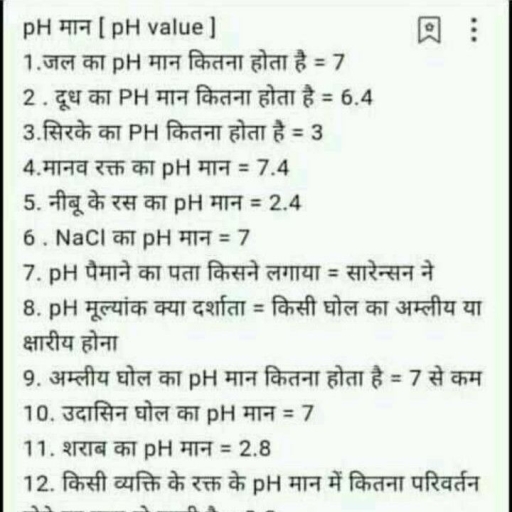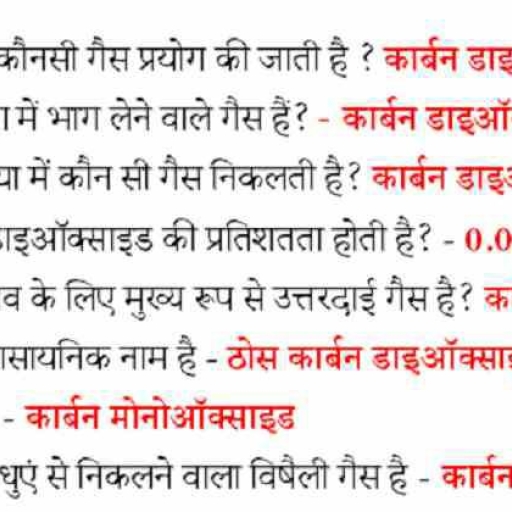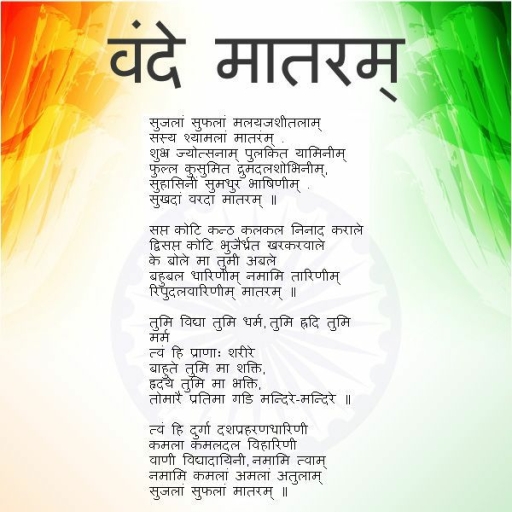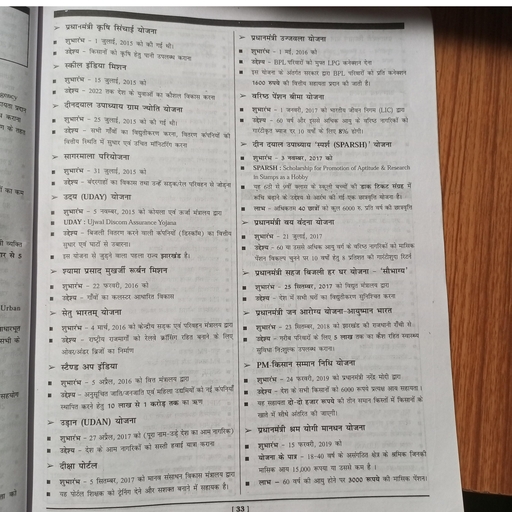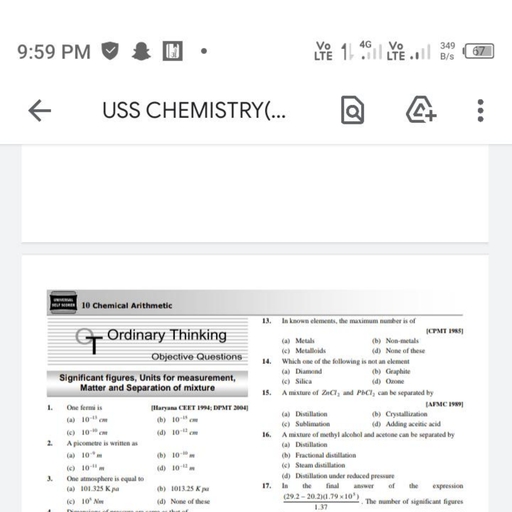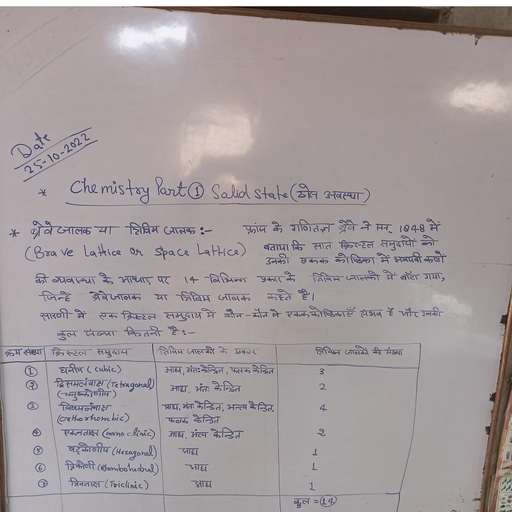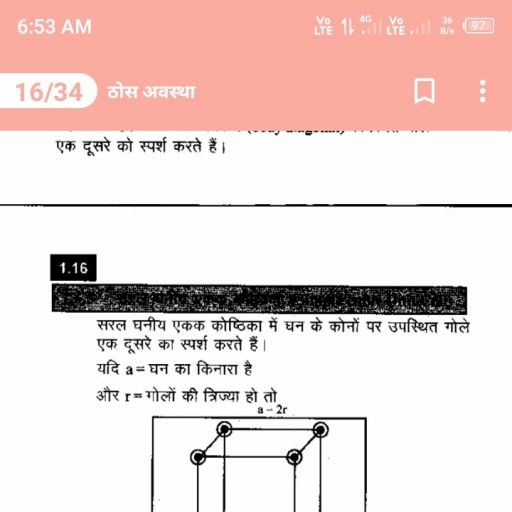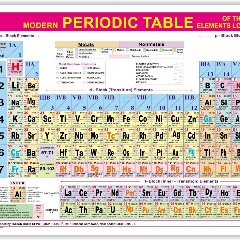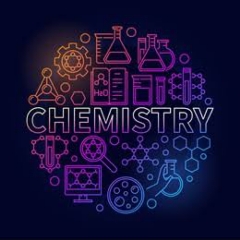Question 2 :
Why do most chemical reaction rates increase rapidly as the temperature rises
Question 3 :
Energy produced in a chemical reaction is a specific type of :<br/>
Question 6 :
For the reaction $2A+B\rightarrow 3C+D$ which of the following does not express the reaction rate?<br/>
Question 8 :
The correct expression for the rate of reaction of elementary reaction, $A + B \rightarrow C$ is :
Question 10 :
The rate for the reaction between ionic compounds cannot be determined because they are generally:
Question 12 :
The unit of rate and rate constant are same for a:
Question 13 :
The branch of chemistry which deals with the study of chemical reaction rate is known as :
Question 14 :
If reaction A and B are given with Same temperature and same concentration but rate of $A$ is doublethan $B$. Pre exponential factor is same for both the reaction then difference in activation energy $E_{A} -E_{B}$is?<br>
Question 15 :
A reaction has both $\Delta H$ and $\Delta S$ negative. The rate of reaction:
Question 20 :
___________ is the unit for the rate of a chemical reaction.
Question 21 :
The rate of reaction for the reaction between ionic compounds cannot be determined because they are generally:
Question 26 :
What is the rate of the reaction for $2A \rightarrow B$ ?<br>
Question 27 :
Which of the following theory is not related to the chemical kinetics?
Question 28 :
While plotting decrease in mass against time, a flat curve shows:
Question 30 :
If the rate of reaction increases by 27 times, when temperature is increased by 30 K, then temperature coefficient of the reaction is:
Question 31 :
The rate of change of concentration of any one of the reactants or products at a particular moment of time is known as the ?
Question 32 :
In___________, a reaction product is itself a catalyst for that reaction leading to positive feedback.<br/>
Question 33 :
$NO_2$ required for a reaction is produced by the decomposition of $N_2O_5$ in $CCl_4$ as per the equation<br>$2N_2O_5(g) \rightarrow 4NO_2(g)+O_2(g)$.<br>The initial concentration of $N_2O_5$ is $3.00\, mol\, L^{-1}$ and it is $2.75\, mol\, L^{-1}$ after $30$ minute. The rate of formation of $NO_2$ is :
Question 34 :
For a reaction, $2NO(g)+{ O }_{ 2 }(g)\rightarrow 2{ NO }_{ 2 }(g)$<br/>Rate $=k{ \left[ NO \right]  }^{ 2 }\left[ { O }_{ 2 } \right] $ if the volume of the reaction vessel is doubled, then the rate of the reaction:
Question 35 :
The rate of formation of $SO_3$ in the following reaction $2SO_2+O_2\rightarrow 2SO_3$ is $10 \, g \, sec^{-1}$. The rate of disappearance of $O_2$ will be:
Question 36 :
For the non-equilibrium process, $A + B \rightarrow Products$, the rate is first order with respect to $A$ and second-order with respect to $B$. If $1.0$ mole each of $A$ and $B$ are introduced into a 1-litre vessel and the initial rate was $1.0 \times 10^{-2}$ mol/litre-sec. The rate (in mol $litre^{-1} sec^{-1}$) when half of the reactants have been used:
Question 37 :
The reaction $A\overset { K }{ \longrightarrow  } $ Product is zero-order while the reaction $B\overset { K }{ \longrightarrow  } $ Product is first-order reaction. For what initial concentration of A is the half lives of the two reactions equal?<br/>
Question 38 :
Thermal decomposition of $N_2O_5$ occurs as per the equation below<br/>$2N_2O_5\rightarrow 4NO_2+O_2$<br/>The correct statement is: 
Question 39 :
The initial pressure of the reactant at $500K$,in the reaction $CaCO_3$ <br> $=$ <br> $CaO$ <br> $+$ <br> $CO_2$ is $200mm$. After $20mins$ the pressure is reduced to $150mm$. Find the average rate of the reaction?
Question 41 :
In elementary reaction steps, which of the following is most likely to have the highest rate?
Question 42 :
In a slow reaction, rate of reaction generally _________ with time.<br/>
Question 43 :
The reaction $ A(g)+2B(g) \rightarrow C(g)+D(g) $ is an elementary process. In an experiment , the initial partial pressure of A and B are $ P_A = 0.40 $ and $ P_B = 0.60 atm . $ When $ P_C = 0.2 atm $ and the rate of reaction relative to the initial rate is ?
Question 44 :
The rate of reaction is doubled for every ${ 10 }^{ 0 }C$ rise in temperature. the increase in reaction rate as a result of rise in temperature from ${ 10 }^{ 0 }C$ to ${ 100 }^{ 0 }C$ is:
Question 45 :
Rate of formation of ${SO}_{3}$ in the following reaction $2{ SO }_{ 2 }+{ O }_{ 2 }\longrightarrow 2{ SO }_{ 3 }$ is $100g\quad { min }^{ -1 }$. Hence disappearance of ${O}_{2}$ is:
Question 46 :
The following reaction was carried out at $44^oC : N_2O_5 \rightarrow 2NO_2 + \dfrac{1}{2}O_2$<br>The concentration of $NO_2$ is $6.0 \times 10^{-3}M$ after $10$ minutes of the start of the reaction. Calculate the rate of production of $NO_2$ over the first ten minutes of the reaction.
Question 47 :
For the reaction $N_2(g) + 3H_2 (g) \rightarrow2NH_3(g)$ under certain conditions of temperature and partial pressure of the reactants. the rate of formation of $NH_3$ is $0.001 \,kg \,h^{-1}$. The rate of conversion of $H_2$ under the same conditions is
Question 48 :
$aA + bB \rightarrow$ Product, $dx/dt = k [A]^a [B]^b$. If concentration of $A$is doubled, rate is four times. If concentration of $B$is made four times, rate is doubled. What is relation between rate of disappearance of $A$and that of $B$?<br>
Question 49 :
In a reaction, a substance undergoes decomposition which is catalyzed in the presence of finely divided nickel. If there are enough sites on the surface of catalysts so that 20 molecules of substance react per second, the rate of reaction for a 1.0M solution is:
Question 51 :
For the chemical reaction $N_2(g)+3H_2(g) \rightleftharpoons 2NH_3(g)$ the correct option is:
Question 52 :
What are the units for the rate of the reaction : $ A \rightarrow B$ ?
Question 53 :
If the first order reaction involves gaseous reactant and gaseous products the units of its rate are:<br/>
Question 54 :
Use the following data for the gas phase decompositionof hydrogen iodide to find the average rate of the reaction in moles HI/litre over the first 2 hours.<br><br><table class="wysiwyg-table"><tbody><tr><td><b>t , hours</b></td><td>0</td><td>2</td><td>4</td></tr><tr><td><b>[HI], M</b></td><td>1</td><td>0.5</td><td>0.33</td></tr></tbody></table>
Question 55 :
The rate law of gaseous reaction : $ A_{(g)}+B{(g)} \rightarrow $ product is given by $ K[A]^2 [B]$. If the 'V' of one reaction vessel is suddenly doubled, which of the following will happen?
Question 56 :
The following data were obtained during the first order thermal decomposition of $ SO_2Cl_2 $ at a constant volume.<br>$ SO_2Cl_{2 (g) } \rightarrow SO_{ 2(g) } + Cl_{ 2(g) } $<br><table class="wysiwyg-table"><tbody><tr><td>Experiment</td><td>$ Time/s^{-1} $</td><td>Total pressure / atm</td></tr><tr><td>$ 1 $</td><td>$ 0 $</td><td>$ 0.5 $</td></tr><tr><td>$ 2$</td><td>$ 100 $</td><td>$ 0.6 $</td></tr></tbody></table>What is the rate of reaction when total pressure is $ 0.65 $ atm ?
Question 57 :
Speed of a chemical reaction depends on which of the following parameters?
Question 60 :
The rate of the reaction:<br/>$CH_{3}COOC_{2}H_{5} + NaOH \rightarrow CH_{3}COONa + C_{2}H_{5}OH$<br/>is given by the equation,<br/>$rate = k[CH_{3}COOC_{2}H_{5}][NaOH]$<br/>If concentration is expressed in $mol/ L$, the units of $k$ are:
Question 61 :
In a closed container at a given temperature, pressure increases from 100 mm Hg to 160 mm Hg in 10 sec. for reaction.<br/>Then the average rate of reaction in first 10 sec. will be?
Question 62 :
$2KClO_3 \to 2KCl$ <br> $+$ <br> $3O_2$. What will be the instantaneous rate of the reaction in terms of the reactant?
Question 63 :
The rate of a chemical reaction doubles for every $10^o C$ rise in temperature. If the temp is increased by $60^o C$ the rate of reaction increases by:
Question 64 :
Instantaneous rate of reaction for the reaction $3A + 2B \rightarrow 5C$ is __________.
Question 66 :
Which of the following can be expected to influence the rate of a chemical reactions?<br>(I) The temperature at which it is carried out.<br>(II) The amount of each specific reactant present.<br>(III) The presence of a catalyst.
Question 67 :
For the reaction, $Cl_2+2I^{-} \rightarrow I_2+2Cl^{-}$, the initial concentration of $I^{-}$ was $0.20 \, mol \, lit^{-1}$ and the concentration after $20$ min was $0.18 \, mol \, lit^{-1}$. Then, the rate of formation of $I_2$ in $mol \, lit ^{-1} \, min^{-1}$ would be:
Question 68 :
Assertion: Rate of reaction for reactants is negative
Reason: The negative sign indicates decrease in concentrations of reactions with time
Question 69 :
The reaction mechanism for the reaction $P\rightarrow R$ is as follows: $P \overset{k_1}\rightleftharpoons Q$ (fast) and ${Q}+{P} \overset{k_2}\rightarrow{R}$ (slow). <br/>The rate law for the main reaction $({P}\rightarrow {R})$ is:<br/>
Question 70 :
In reactions involving gaseous reactants and gaseous products, the units of rate are:<br/><br/>
Question 71 :
Reaction; $A+B\longrightarrow C+D$, follows rate law; $rate=k{ \left[ A \right]  }^{ 2 }{ \left[ B \right]  }^{ 2 }$. Starting with initial concentration of $1M$ of $A$ and $B$ each, what is the time taken for concentration of $A$ to become $0.25M$?<br/>Given: $k=2.303\times { 10 }^{ -2 }{ sec }^{ -1 }$ 
Question 72 :
For a given reaction, pressure of catalyst reduces the energy of activation by 2 kcal at $27^0C$. The rate of reaction will be increased by:
Question 73 :
The concentration of a reactant changes from $0.06M$ to $0.04M$ in $20secs$. What is the average rate of the reaction?
Question 74 :
For the reaction $N_{2}O_{5}(g)\rightarrow 2NO_{2}(g)+\frac{1}{2}O_{2}(g)$ the value of rate of disappearance of $N_{2}O_{5}$ is given as 6.25 $\times$ 10$^{-3}$ mol  L$^{-1}$ S$^{-1}$. The rate of formation of $NO_{2}$ and $O_{2}$ is given respectively as:
Question 77 :
The units of rate constant of a reaction when the rate of reaction is directly proportional to the concentration of one of the reactants is:
Question 78 :
For the reaction$A+B\rightarrow $ product, it is found that the order of $A$ is $1$ and the order of $B$ is$\dfrac{1}{2}$, the concentration of both A and B are increased four times, the rate will increase by a factor of:
Question 79 :
The stoichiometry coefficient in rate of reaction is same for average rate as well as instantaneous rate of reaction
Question 80 :
If $r \displaystyle = \frac{-3}{2} \frac{\Delta [A]}{\Delta t} = \frac{-5}{2} \frac{\Delta [B]}{\Delta t} = \frac{+7}{3} \frac{[\Delta C]}{\Delta t}$, which of the following is the corresponding reaction:
Question 81 :
The rate of chemical reaction depends on the nature of reactants because:<br/>
Question 82 :
For the reaction involving the formation of sulphur trioxide from sulphur dioxide and oxygen, the rate of reaction with respect to reactants is given as:
Question 83 :
Rate of formation of ${ SO }_{ 3 }$ according to the reaction $2{ SO }_{ 2 }+O_{ 2 }\rightarrow 2{ SO }_{ 3 }\quad is\quad 1.6\times { 10 }^{ -3 }kg\quad min^{ -1 }$. Hence rate at which $SO_{ 2 }$ reacts is:<br/>
Question 84 :
For a reaction scheme $A \xrightarrow[]{k_1} B \xrightarrow[]{k_2} C$, if the rate of formation of $B$ is set to be zero then the concetration of $B$ is given by:
Question 85 :
The study of chemical kinetics becomes highly complicate if there occurs:<br/>
Question 86 :
For a given reaction $A$ $\rightarrow$ Products, rate is $1\times10^{-4} M s^{-1}$ when $[A] = 0.01$ M and rate is $1.41\times 10^{-4} M s^{-1}$ when $[A] = 0.02$ M. Hence, rate law is:
Question 87 :
$2C$ <br> $+$ <br> $O_2$ <br> $=$ <br> $2CO$. The rate of disappearance of $C$ is $2\times10^{-3}molL^{-1}sec^{-1}$. What is the instantaneous rate of the reaction?
Question 88 :
In the formation of $HBr$ from $H_2 \& Br_2,$ following mechanism is observed.<br>$(A) Br_2\rightleftharpoons 2Br\cdot$<br>$(B) H_2 + Br \cdot \rightarrow HBr + H \cdot$ slow step<br>$(C) H \cdot + Br_2 \rightarrow HBr + Br\cdot$ Fast step<br>Calculate the rate of reaction , if concentration of hydrogen is twice that of bromine and the rate constant is equal to one rutherford. Concentration of bromine is $1\,M.$
Question 89 :
Reaction, $5C\longrightarrow3A+2B$. The rate of formation of $A$ is $0.027molL^{-1}sec^{-1}$. What will be the rate of disappearance of $C$?
Question 90 :
$2N_2O_5(g) \rightarrow 4NO_2(g) + O_2(g)$<br>What is the ratio of the rate of decomposition of $N_2O_5$ to rate of formation of $NO_2$?
Question 91 :
For a reaction<br>$2A+B\rightarrow C+D$, the active mass of $B$ is kept constant but that of $A$ is tripled. The rate of reaction will -
Question 92 :
The reaction $2NO+Br _{2}\rightarrow 2NOBr$, is supposed to follow the following mechanism<br/>(i)$NO + Br_{2} \rightleftharpoons NOBr_{2}$ <br/>(ii)$NOBr_{2}+NO \overset{slow}{\rightarrow}2NOBr$<br/>The rate law expression is:
Question 93 :
At $27^{\circ}$C it was observed during a reaction of hydrogenation that the pressure of hydrogen gas decreases from 2 atm to 1.1 atm in 75 minutes. The rate of reaction is:
Question 94 :
For the reaction $2A + 3B \rightarrow$  products, A is taken in excess and on changing the concentration of B from 0.1 M to 0.4 M, the rate becomes doubled. Thus, the rate law of the reaction is:<br/>
Question 95 :
For the reaction :<br/>$2NH_{3}(g) \rightarrow N_{2}(g) + 3H_{2}(g)$<br/>if rate of disappearance of of $NH_{3}$ is $1.7\ gm/sec$ then rate of appearance of ${N}_{2}$ should be:
Question 96 :
$H_2$ <br> $+$ <br> $I_2$ <br> $=$ <br> $2HI$. What will be the instantaneous rate of the reaction in terms of product?
Question 97 :
The decomposition of $2N_{2}O_{5} \rightarrow 2N_{2}O_{4}+ O_{2}$ is at $200^{o}C$. If the initial pressure is 114 mm and after 25 min. of the reaction the total pressure of gaseous mixture is 133 mm. Calculate the average rate of the reaction in a) $atm\ min^{-1}$  b)  $mol\ L^{-1} s^{-1}$ respectively.<br/>
Question 98 :
If certain decomposition reaction found to obey equation in term of partial pressure (P) of reactant : $\dfrac {a - p^2}{p^2} = b kt$,what is order of reaction if a, b and k are constant (t represents time)?
Question 99 :
In a catalytic conversion of $N_2$ to $NH_3$ by Haber's process, the rate of reaction was expressed as change in the concentration of ammonia per time is $40\times 10^{-3}$ mol L$^{-1}$ s$^{-1}$. If there is no side reaction, the rate of the reaction as expressed in terms of hydrogen is :(in mol L$^{-1}$ s$^{-1}$)
Question 100 :
One litre of $2M$ acetic acid and one litre of $3M$ ethyl alcohol were mixed. The esterification takes place according to the reaction:<br/>$CH_3COOH+C_2H_5OH\rightarrow CH_3COOC_2H_5+H_2O$<br/>If each solution is diluted by one litre water, the rate would become:<br/>
Question 101 :
$A$ <br> $+$ <br> $2B$ <br> $=$ <br> $4C$. The rate of appearance of $C$ at a time $t$ is $1.5\times10^{-3}molL^{-1}sec^{-1}$. What will be the instantaneous rate of the reaction?
Question 102 :
For the reaction $N_2 + 3H_2 \rightarrow 2NH_3$ if $\dfrac{\Delta[NH_3]}{\Delta t} = 2 \times 10^{-4} \,mol \,l^{-1} s^{-1}$, the value of $\dfrac{-\Delta [H_2]}{\Delta t}$ would be:
Question 103 :
From the concentrations of R at different times given below. Determine  the average rate of the reaction range: R $\rightarrow$ P in given intervals of time.<br/><br/><table class="wysiwyg-table"><tbody><tr><td>t (s)</td><td>0</td><td>5</td><td>10</td><td>20</td><td>30</td></tr><tr><td>$10^{-3}\, \times\, [R] \,(mol\, L^{-1})$</td><td>160</td><td>80</td><td>40</td><td>10</td><td>2.5</td></tr></tbody></table>
Question 104 :
The rate of the reaction $A+B_2\rightarrow AB+B$; is directly proportional to the concentration ofA and independent of concentration of $B_2$, hence, rate law is:
Question 105 :
Which of the following expressions is correct for the rate of reaction given below?<br/>$ 5Br_{(aq)}^-+BrO^-_{3(aq)}+6H^+_{(aq)} \rightarrow 3Br_{2(aq)}+3H_2O_{(I)} $
Question 106 :
For a reaction $P + Q\rightarrow 2R + S$. Which of the following statements is incorrect?
Question 107 :
For the reaction $4NH_{3} + 5O_{2} \rightarrow 4NO + 6H_{2}O$, if the rate of disappearance of $NH_{3}$ is $3.6\times 10^{-3}mol\ L^{-1} s^{-1}$, what is the rate of formation of $H_{2}O$?
Question 108 :
The rate of a reaction expressed in terms of change in concentration of products at two different times, that is the average rate in terms of product, can be written as ?
Question 109 :
Consider the following statements:<br/>1. Rate of a process is directly proportional to its free energy change.<br/>2. The order of an elementary reaction step can be determined by examining the stoichiometry.<br/>3. The first order reaction describes exponential time course.<br/>Of these statements:<br/>
Question 110 :
Assertion: Instantaneous rate of reaction is equal to $dx/dt$
Reason: It is the rate of reaction at any particular instant of time.
Question 111 :
At $27^{\circ}$C it was observed in the hydrogenation of a reaction, the pressure of $H_2(g)$ decreases from $10$ atm to $2$ atm in $10$ min. Calculate the rate of reaction in M $min^{-1}$ (Given R = $0.08$ L atm $K^{-1}\, mol^{-1}$) :
Question 112 :
For the reaction $2N_2O_{5(g)} \rightarrow 4NO_{2(g)} + O_{2(g)}$, if concentration of $NO_2$ in $100$ seconds is increased by $5.2 \times 10^{-3}m.$ Then rate of reaction will be:









